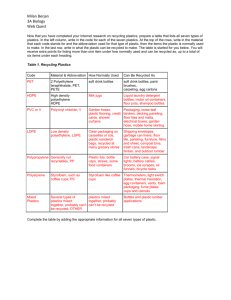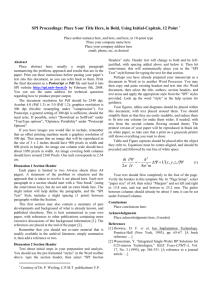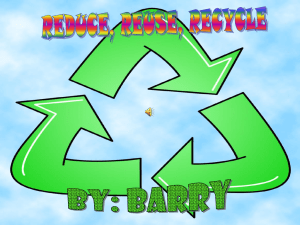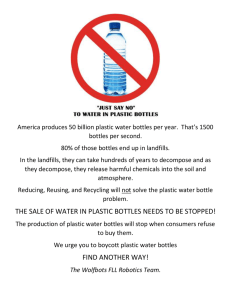Not all plastics were created equal
advertisement
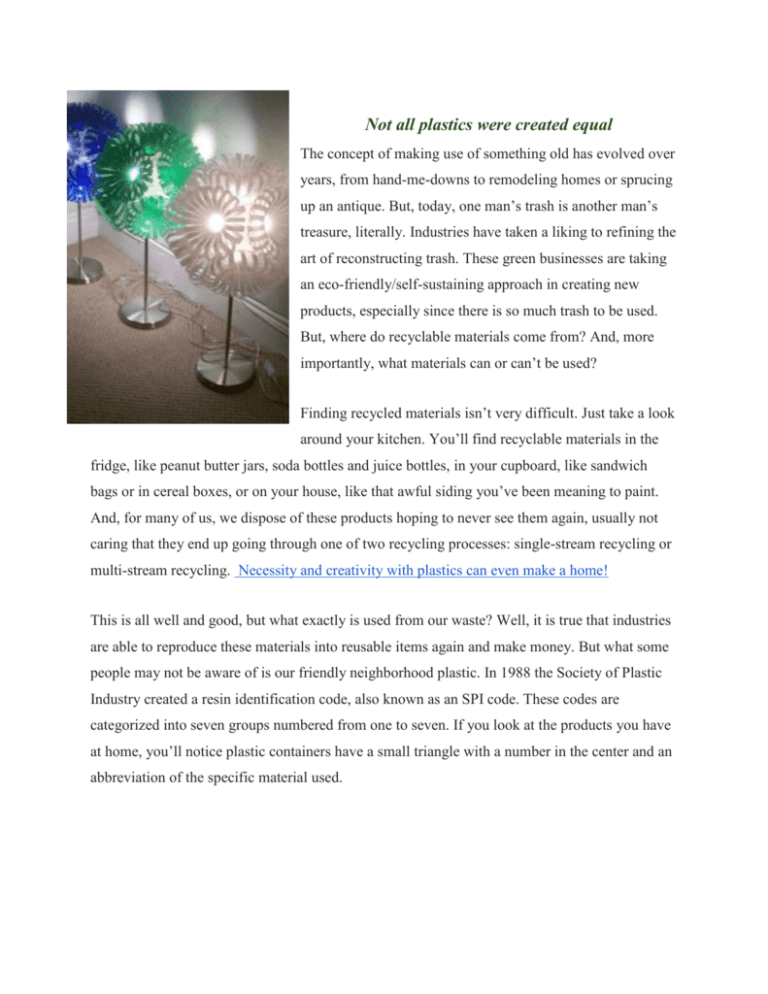
Not all plastics were created equal The concept of making use of something old has evolved over years, from hand-me-downs to remodeling homes or sprucing up an antique. But, today, one man’s trash is another man’s treasure, literally. Industries have taken a liking to refining the art of reconstructing trash. These green businesses are taking an eco-friendly/self-sustaining approach in creating new products, especially since there is so much trash to be used. But, where do recyclable materials come from? And, more importantly, what materials can or can’t be used? Finding recycled materials isn’t very difficult. Just take a look around your kitchen. You’ll find recyclable materials in the fridge, like peanut butter jars, soda bottles and juice bottles, in your cupboard, like sandwich bags or in cereal boxes, or on your house, like that awful siding you’ve been meaning to paint. And, for many of us, we dispose of these products hoping to never see them again, usually not caring that they end up going through one of two recycling processes: single-stream recycling or multi-stream recycling. Necessity and creativity with plastics can even make a home! This is all well and good, but what exactly is used from our waste? Well, it is true that industries are able to reproduce these materials into reusable items again and make money. But what some people may not be aware of is our friendly neighborhood plastic. In 1988 the Society of Plastic Industry created a resin identification code, also known as an SPI code. These codes are categorized into seven groups numbered from one to seven. If you look at the products you have at home, you’ll notice plastic containers have a small triangle with a number in the center and an abbreviation of the specific material used. Here is a list of what each code represents: SPI code 1: Polyethylene terephthalate (PET or PETE) is used for things like soda bottles, but is recycled into bags, clothes or carpets. SPI code 2: High-Density Polyethylene (HDPE) is used for things like milk jugs and shampoos, but is recycled into fences, plastic crates or plastic lumber. SPI code 3: Polyvinyl Chloride (PVC) is used for things like pipes and tiles. PVC isn’t usually recycled, however can be used for flooring when it is recycled. SPI code 4: Low-Density Polyethylene (LDPE) is used for sandwich bags and squeezable bottles because it’s tough, transparent and flexible. LDPE isn’t usually recycled, but can be used for making furniture, lumber and garbage bags if it is recycled. SPI code 5: Polypropylene (PP) has a high-melting point and is extremely tough. It is used to make Tupperware, prescription bottles and bottle caps. The items it’s recycled into need to be resistant, such as ice scrapers and battery cables. SPI code 6: Polystyrene (PS) is commonly known as Styrofoam. This material is difficult to recycle, but products such as license plate frames and rulers can be made. SPI code 7: This category is for all the plastics that don’t fall into any of the categories above. Recyclable materials are abundant, especially plastics. However, if you’re thinking of creating your own green business, make sure you thoroughly investigate the details of every SPI code.





